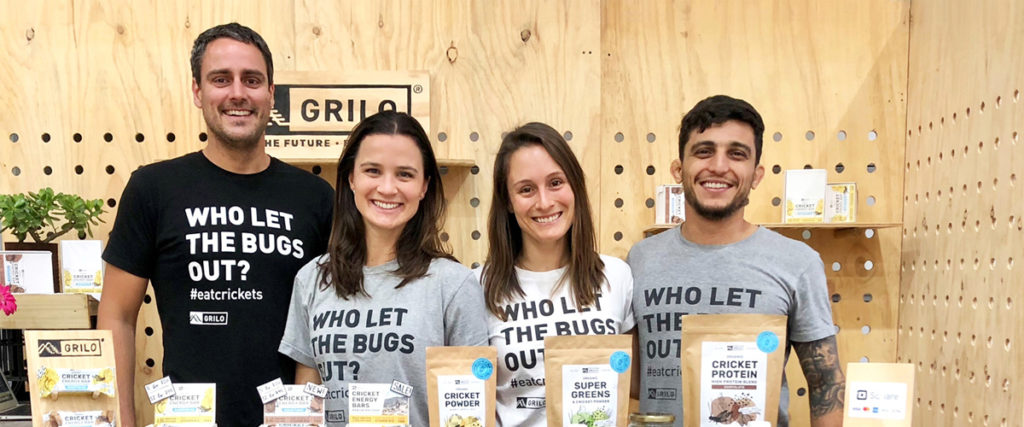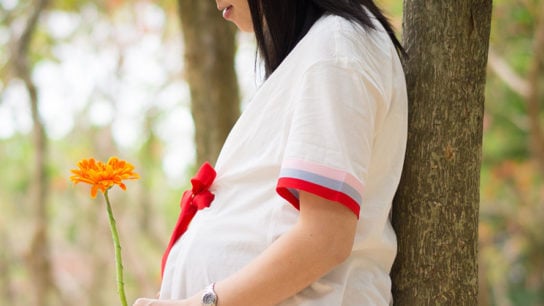Byron Bay-based startup Grilo Protein wants to make crickets a food staple in your kitchen. Read on to discover how.
Long a staple snack in certain countries around the world – it is estimated that approximately 2 billion people eat insects every day – the concept of consuming crickets is one now taking hold way beyond its traditional domain of Asian street food stalls. With the world population predicted to reach 9.7 billion by 2050 and galloping awareness of the environmental cost of eating meat, the need to find protein alternatives is urgent. Yet, often, there’s still significant stigma attached to the idea of insect protein. Byron Bay-based Grilo Protein is trying to change that conversation. The brainchild of its four founders Lucas Becker, Pedro Da Silva and Camila and Martina Meyer, it hopes to promote the healthy attributes and sustainability of crickets via their tasty products and free online recipes.
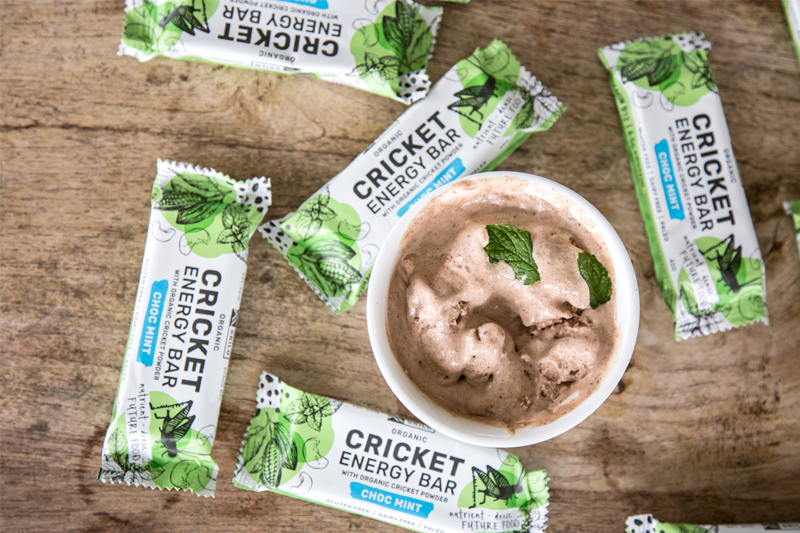
It all started after the two couples moved to Byron Bay. As people who exercised a lot, keen to up their protein intake whilst still keeping an eye on sustainability, the four wanted to find something better to eat than traditional livestock. That’s where the crickets came in. As Lucas puts it, “they use much less water and far less land, energy and resources in general to produce the same amount of protein per gramme.” Whereas you need around 22,000 litres of water to produce 1kg of beef, only 1 litre of water is needed to produce 1kg of crickets.
In addition, Lucas argues that there are many convincing nutritional reasons to get crickets onto your dinner plate. With a very high protein of around 69%, “what people sometimes don’t know is that crickets are also extremely high in vitamin B12 with 150% of the recommended daily intake in one serving of 10g.” Add to that the fact it contains 2.2 times more iron than spinach and 10 times more vitamin B12 than salmon and you’ve got a compelling case.
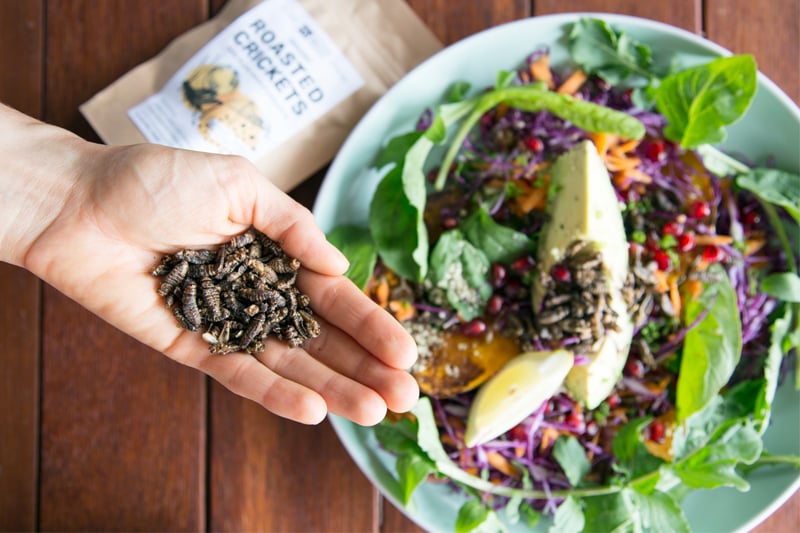
Grilo Protein launched in 2015 with a range of products designed to make crickets more palatable. “We source our crickets from the only certified organic farm on the planet at this stage – a place in Canada,” explains Lucas. “We’re looking into options in the near future to get crickets from local Australian farms as soon as they get their organic certification though.” In a small town near Byron Bay called Murwillumbah, they then make the crickets into an array of products ranging from whole crickets to cacao fudge flavoured energy bars and cricket powder, their most popular product made essentially of ground crickets that can be used in all sorts of recipes. “In second comes our chocolate high protein powder. I think the reason it is so popular is because it’s a ready-to-use powder that you can just add into your smoothies at any time,” says Lucas.
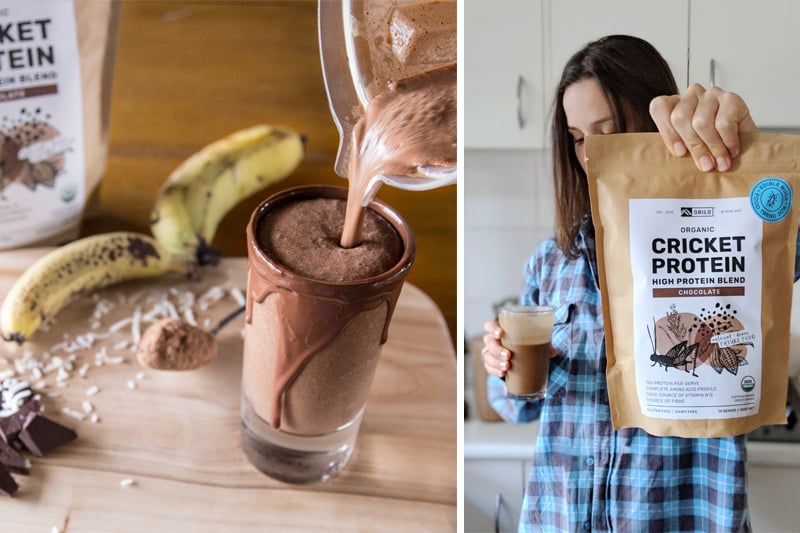
So, what does it all taste like? “Both the cricket powder and roasted crickets have a very distinct flavour. They’re quite nutty and earthy. They certainly add a nice, wholesome flavour into most recipes if used in the right amounts,” says Lucas. Others have even suggested that they taste like popcorn, which doesn’t sound too bad, does it? Working hard to normalise the concept of eating crickets, the Grilo Protein team “carries out regular demonstrations, workshops, tastings and talks to people on the benefits of how to use them and also the positive impact on the environment eating crickets has.” With two chefs on the team, they also publish plenty of recipes on their website, encouraging people to have a go at making something new. “We even had a few people asking if we would launch a cookbook,” says Lucas. And, if nothing else, they’re certainly giving people something to discuss over dinner. “When we have friends around, it’s a very entertaining ingredient to have on the table for them to try!”

For Grilo Protein, the task ahead isn’t all easy baking. “It’s our biggest challenge to get over that cultural barrier of eating bugs,” says Lucas. “Once people see the products and try them, especially the energy bars where you can’t see any crickets and all you can taste is chocolate and banana, it all becomes much easier for them to accept.” And, as far as he’s concerned, the future looks bright. “After two years of selling our products, we’ve started to notice a shift in people’s perceptions. I believe it’s because there’s a lot of information out there on TV or social media saying that crickets are a sustainable and nutritious option.” Lucas envisages a future, one day, where you’ll head to the supermarket, “going to buy meat and chicken, but also see crickets on the shelf. As he puts it, “the reality is, because it’s something so new, it may take another 5-10 years.” But their bet is, it’s coming.
To get in on the game, try out their cricket falafel or their cricket chocolate cheesecake!
